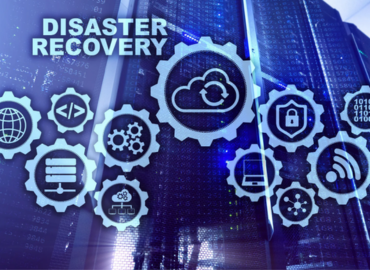Why Should My Company Have a Disaster Recovery Test Plan?

Disasters are unpredictable, but disaster recovery shouldn’t be. Disaster recovery tests (DRT) are a necessity to ensure that you can recover from a disaster. You don’t want to find out the hard way that your disaster recovery plan isn’t working.
A DRT is a simulation of an event that could potentially happen in the future. It includes all the steps you would need to take in order to recover from it and your organization's ability to function after an event.
However, the only thing worse than not having a disaster recovery test plan is having it fall short, costing your company irreplaceable time and money to restore lost data in order to resume operations.
Let’s dive into why having a disaster recovery test plan is crucial to maintaining an infallible network, and how to make sure that if an unexpected interruption occurs, your plan does its job.
What is a Backup and Disaster Recovery Test?
Simply put, a backup and disaster recovery test is a way to simulate an event that would require your Disaster Recover (DR) plan to kick in. Ideally, the test would confirm how well your organization can recover from a disaster. It usually includes the following:
- Testing of communications systems and networks
- Testing of backup and recovery processes
- Testing of business continuity plans
- Testing of data restoration procedures
- Identify gaps in your IT infrastructure
Why do I need it?
Testing your DR plan should be part of the DR plan itself. With the average cost of one minute of downtime being $11,600 for enterprises and $8,000 for small businesses, most companies can’t afford faulty DR plans.
Additionally, we’ve seen a record number of natural disasters recently, without any sign of that number decreasing. Malware and cyberattacks are no longer the only thing we need to be concerned about. Strong winds, earthquakes and flooding can all be detrimental to your network and can result in major data loss.
How often should I be running a recovery test?
The short answer is: it depends on your company’s specific operations. But more often than not, the answer is “more than you’re doing it now.”
At SSE, we recommend running a test every [1] year.
What are the key benefits of a disaster recovery test?
- Validation of Your Communications Systems
All disasters begin with communication with your internal staff and potentially even your client base. A DRT will allow your entire team to validate that communication paths are in place and work as intended.
- Validation of Data Restoration Including All Core Systems
Most organizations elect to spin up and recover a subset of their core servers. Walking through this process will allow your team to verify that all required data is made available within the designated time frames.
- Validation of Business Continuity Plans
Simulating a natural disaster allows your team to spin up critical services offsite, typically in the cloud. Your team will validate actual compared to planned recovery times. Your team will confirm they have pre-staged the necessary mobile computing devices, typically laptops, necessary to connect to your DR site
Lastly, your team will walk through test plans to ensure they know how to connect, and how to verify critical systems are both online and working as anticipated.
- Identify Gaps in Your IT Infrastructure
Have you ever made a purchase for your business that you would have never made had you known that there was an option out there that would have saved you time, money and headaches? The DRT plan will help identify gaps in your IT infrastructure so that no future purchase is made unnecessarily.
As a business owner, it's not always easy to think about what would happen if something went wrong. A DRT is an important exercise that can save your business.
Work With SSE To Establish Strong DRT Practices
Let us put our cybersecurity expertise to work for your business to make sure the plans you have in place will protect your company and its data from disaster. Schedule an initial consultation with our team now!
Additional Blog Posts

CMMC Deadlines: Defense Contractors Face High-Stakes Compliance Timelines
As the U.S. Department of Defense accelerates enforcement of the Cybersecurity Maturity Model Certification (CMMC), thousands of Defense Industrial Base…
DOJ Ramps Up Cyber-Enforcement on Defense Contractors
The Department of Justice’s recent $4.6 million settlement with defense contractor MORSECORP sends a clear message to the Defense Industrial…

